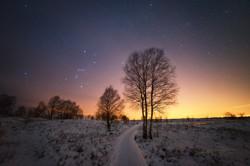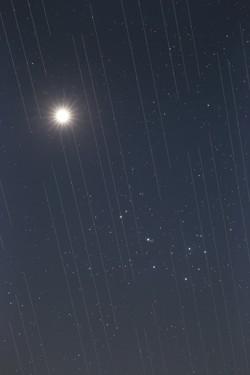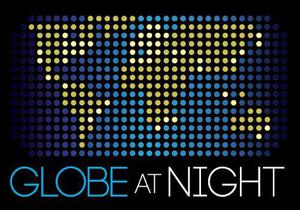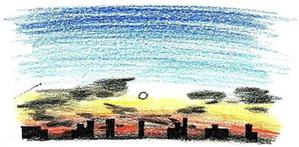Termine del Glossario Inquinamento luminoso
Descrizione L'inquinamento luminoso è la presenza di un'illuminazione artificiale eccessiva o scorretta (emessa in una direzione al di sopra dell'orizzonte), come i lampioni, che provoca lo schiarimento del cielo notturno. Si tratta di un fenomeno inopportuno, poiché disturba l'osservazione di stelle, e pianeti, modifica gli ecosistemi e molti altri cicli naturali che si ripercuotono sugli esseri viventi. Inoltre, l'inquinamento luminoso è anche un utilizzo inefficiente delle finanze e delle risorse.
Termini correlati
Vedi questo termine in altre lingue
status del termine e della definizione La definizione originale di questo termine in inglese é stata approvata da un ricercatore astronomo e da un docente La traduzione di questo termine e della sua definizione sono state approvate da un ricercatore astronomo e da un docente
Il Glossario Multilingue OAE é un progetto dell'Ufficio IAU per la didatticadell'astronomia (OAE) in collaborazione con l'ufficio IAU OAO per la DivulgazioneAstronomica (OAO). I termini e le definizioni sono stater scelte, scritte eriviste da un impegno collettivo da parte di OAE, i Centri e i Nodi OAE e iCoordinatori Nazionali per la Didattica dell'Astronomia e da altri volontari.Potete trovare una lista completa dei crediti, Tutti i termini del glossarioE le definizioni sono pubblicate su Creative Commons CC BY-4.0 licenza e dovrebbero essere accreditate ad IAU OAE.
Se noti un errore di fatto o di traduzione in questo termine del glossario, per favore contattaci.
File multimediali correlati
Notte stellata sul parco nazionale dell'Eifel, di Dong Han, Cina
Crediti: Dong Han/IAU OAE
License: CC-BY-4.0 Creative Commons Attribuzione 4.0 Internazionale (CC BY 4.0) icone
Panorama reale sull'inquinamento luminoso, di Tomas Slovinsky, Slovacchia
Crediti: Tomáš Slovinský/IAU OAE
License: CC-BY-4.0 Creative Commons Attribuzione 4.0 Internazionale (CC BY 4.0) icone
Sciame di satelliti contrapposti alla bellezza del cielo notturno, di Torsten Hansen, Germania
Crediti: Torsten Hansen/IAU OAE
License: CC-BY-4.0 Creative Commons Attribuzione 4.0 Internazionale (CC BY 4.0) icone
Attività correlate
How Light Pollution Affects the Stars: Magnitude Readers
astroEDU educational activity (links to astroEDU website) Description: Build a Magnitude Reader to explore the magnitude of stars.
License: CC-BY-4.0 Creative Commons Attribuzione 4.0 Internazionale (CC BY 4.0) icone
Etichette:
Hands-on
, Dark skies
, ecology
Fasce d'età
10-12
, 12-14
, 14-16
, 16-19
Livello di istruzione
Middle School
Aree di apprendimento
Modelling
, Observation based
Costi:
Medium Cost
Durata:
1 hour
Dimensione del Gruppo:
Group
Abilità:
Asking questions
, Planning and carrying out investigations
Globe at Night Activity Guide
astroEDU educational activity (links to astroEDU website) Description: Learn to observe and record the faintest visible stars to measure the light pollution.
License: CC-BY-4.0 Creative Commons Attribuzione 4.0 Internazionale (CC BY 4.0) icone
Etichette:
Hands-on
, Dark skies
, ecology
, Citizen science
Fasce d'età
4-6
, 6-8
, 8-10
, 10-12
, 12-14
, 14-16
, 16-19
, 19+
Livello di istruzione
Informal
, Middle School
, Other
, Primary
, Secondary
, University
Aree di apprendimento
Observation based
, Project-based learning
Costi:
Low Cost
Dimensione del Gruppo:
Group
Abilità:
Communicating information
, Planning and carrying out investigations
How Many Stars Can You See at Night?
astroEDU educational activity (links to astroEDU website) Description: Investigate the effects of light pollution on night sky observation.
License: CC-BY-4.0 Creative Commons Attribuzione 4.0 Internazionale (CC BY 4.0) icone
Etichette:
Software
, ecology
, Observation of sky
, Pollution
, Constellations
, stellarium
Fasce d'età
12-14
Livello di istruzione
Middle School
Aree di apprendimento
Observation based
, Social Research
Costi:
Low Cost
Durata:
45 mins
Dimensione del Gruppo:
Group
Abilità:
Analysing and interpreting data
, Communicating information
, Planning and carrying out investigations
Evening Sky Watching for Students
astroEDU educational activity (links to astroEDU website) Description: Let's observe the evening sky with the naked eye
License: CC-BY-4.0 Creative Commons Attribuzione 4.0 Internazionale (CC BY 4.0) icone
Etichette:
Art
, Observation of sky
, Sky watching
, Motion of star
Fasce d'età
4-6
, 6-8
Livello di istruzione
Pre-school
, Primary
Aree di apprendimento
Discussion Groups
, Observation based
, Social Research
Costi:
Free
Durata:
30 mins
Dimensione del Gruppo:
Group
Abilità:
Asking questions
, Communicating information
Let there be light… but not too much!
astroEDU educational activity (links to astroEDU website) Description: Build a model to learn what light pollution is and what its effects are.
License: CC-BY-4.0 Creative Commons Attribuzione 4.0 Internazionale (CC BY 4.0) icone
Etichette:
Pollution
, sky observation
, lighting source
Fasce d'età
6-8
, 8-10
, 10-12
Livello di istruzione
Middle School
, Primary
Aree di apprendimento
Discussion Groups
, Modelling
, Observation based
, Project-based learning
Costi:
Medium Cost
Durata:
2 hours
Dimensione del Gruppo:
Group
Abilità:
Asking questions
, Developing and using models
, Engaging in argument from evidence
















